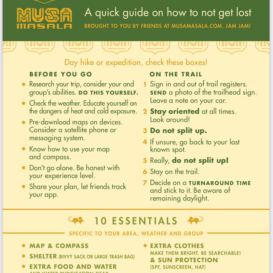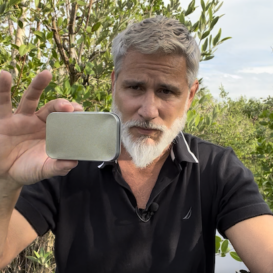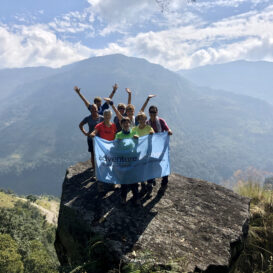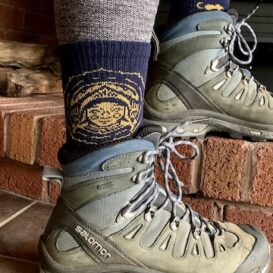Is there anything worse than a leaking tent, broken shoelace or ripped rain gear when you are on an extended trip? There may be a few worse things, but unexpected happenings that come up on a climb or hike or expedition often make the difference between a no problem moment or really bad, foul time. So here to get you thinking ahead and being prepared (who said that?) is Grant Salisbury.
Grant has backpacked throughout the lower 48 states. He’s done about a dozen river trips to remote parts of Alaska and the Yukon territory, primarily packrafting trips in the Brooks Range, as well as 1000+ miles of the Yukon river. He also spent about a decade living in developing countries running landmine clearance operations, typically in areas with little infrastructure such as rural regions of Angola and Mozambique and Colombia.
So as part of our Search and Rescue series here is a short and sweet tale about gear redundancy. Having what you need, something for repairs, and spares just in case. (“Oh my glove just flew off in the wind, off the cliff. Now a marmot has it!”) Let’s make these memories good ones. Jam Jam!!
3 Ways to Prepare for Your Hike or Expedition

If you’re planning an extended trip to the outdoors, you’ve probably given a lot of thought about what gear to bring. What gets far less thought – if any – is having a plan B in the event that critical gear is lost or compromised. I’ve learned the importance of this firsthand over dozens of trips to the Arctic and other remote places where the nearest settlement may be 100+ miles away. I’ve lost gear in rivers, had tents ruined and learned the hard way that rodents will chew almost anything.

Here are the 3 lessons I wished I’d known starting out…
1 Bring a basic complement of repair supplies.
I’ve never experienced a gear issue that I couldn’t fix with some basic supplies. On backpacking trips my pack list includes a knife/multi-tool, glue, super strong fabric tape and a tent pole sleeve. In addition, my first aid kit has a number of items that are useful for repairs including scissors and safety pins. This has proven a lightweight, versatile foundation which I can then tailor as needed for other trip types. For example, my pack list for river trips includes a wide variety of boat repair materials. Lastly it’s worth noting that we carry plenty of items such as pack straps and guy lines that can be repurposed for emergency repairs. Be creative with what you have – I once fixed a broken paddle blade by gluing a tent peg across it.

2 Identify what gear is critical and have a backup plan.
The list of what’s truly critical is usually shorter than what people imagine. For most of my trips – which tend to be in cold environments – two things are essential: having shelter and keeping warm. A backup plan can be as simple as having basic tent repair supplies and the ability to create fire (e.g. waterproof matches). This list may change depending on the environment. For example, in places where water purification is critical, carrying a set of purification tablets in addition to a water purifier is a good idea.
You don’t need to stuff your pack with survival gear every time you head outdoors. The important thing is to be thoughtful about what you really need and have a fallback option for each critical item. Be practical. For instance, if you’re traveling with a group, your fallback option for shelter can be as simple as cramming into someone else’s tent.

3 Carry a satellite communication device for emergencies.
Satellite-based communication devices like Spot Messenger and Garmin InReach have made it cheap and easy to contact emergency services. With a robust, lightweight device you can send an SOS or exchange text messages almost anywhere in the world. They’re also great for sending updates to friends and family who want to know where you are.
This technology is starting to make its way into smartphones – Apple announced the availability of satellite-based emergency SOS on its iPhone 14 models for the US and Canada in November 2022 and has been expanding coverage. To be clear, satellite communication devices are not a substitute for good planning – you should always be prepared for self-rescue – but they are a good safeguard. Make sure you do the following before heading out: update your emergency contacts, confirm satellite coverage for the area, check/activate your subscription plan and check/charge batteries.

In short, some basic preparation and common sense can go a long way towards keeping you safe and comfortable in the backcountry in the unlikely event that something goes wrong. Carrying a basic set of repair supplies will set you up to address the vast majority of gear issues that might arise. And if something more serious happens, carry a satellite communication device, and ensure you have a way to stay sheltered and warm until help arrives. This Maya Angelou quote nicely captures the right attitude: “Hoping for the best, prepared for the worst, and unsurprised by anything in between.”
Follow Grant on Instagram: @grant.salisbury













